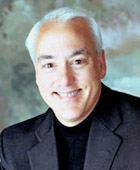
I was reading an interesting article by Peggy Noonan in the Wall Street Journal about the origin of Auld Lang Syne. The essence of what started as a poem, according to Noonan, asks, “Should those we knew and loved be forgotten and never thought of? Should old times past be forgotten? No, says the song, they shouldn’t be. We’ll remember those times and those people, we’ll toast them now and always, we’ll keep them close. ‘We’ll take a cup of kindness yet.’”
It occurred to me that in 2010 there was a dramatic shift in the talk about the role of nursing homes. The shift seemed to be already occurring. At one conference I spoke at I attended sessions where nursing home operators wanted to know how to convert their facilities to assisted living facilities and assisted living facilities wanted to know more about Medicaid waivers so that they could accept more acute residents.
So my question: Should the old model of nursing homes be forgotten and never thought of again?
By that I am writing of one thing in particular: the notion that nursing homes are residential places, homes for our elderly. The industry has become much better at providing that residential care with quality improving, resident experience improving and some word of mouth starting to seep out around these improvements.
Yet just as the industry is getting better, there is a shift. With all of the talk about accountable care, nursing homes are starting to jockey for position. The real money, they say, is in the Medicare-reimbursed services—the rehabilitation piece of our business. And they are right. And they are good at providing the service—less expensively than hospitals, and, therefore, attractive to payers.
But in that shift—which starts with a mind shift, which starts with all the talk in the industry—are we forgetting our industry roots and what we do best?
This country is not getting any healthier and self-responsibility seems to fall on deaf ears. We are still ranked 37th in the World Health Organization—plagued with chronic medical conditions and more obese than ever. Do we really believe that all of the care can be shifted to the home or to less acute settings?
So what is the role of the nursing home?
Can we be good at both residential and rehab care?
Are we creating a self-fulfilling prophecy by shifting services and asking our residents to live elsewhere?
Is it in the best interest of elders to be served in less acute settings?
Are families and caregivers being educated about the role of all services in the aging continuum so that they understand how the pieces fit and where to find the best care, further understanding that the level of care needed by Mom and Dad might indeed be in a nursing home?
But what if there are fewer and fewer residential nursing homes to choose? Can the rest of the aging services sector really rally to care for mom and dad in a coordinated fashion?
Perhaps the PACE program is on to something. I’m not sure.
What I believe is that there is a role for the traditional nursing home. We shouldn’t forget that in a new year. And we might do well to pause before we “will” ourselves out of one business and into another. We have poured many “cups of kindness” and “yet” our work is not done.
Anthony Cirillo, FACHE, ABC, president of Fast Forward Consulting, is a sought-after speaker, healthcare expert, elder advocate and blogger. He works with long-term care facilities in the area of strategic marketing and resident experience. Anthony is an expert guide for assisted living for about.com. He is the author of “Who Moved My Dentures?” In his spare time he entertains residents in assisted living and nursing facilities. For more, go to www.4wardfast.com and www.anthonycirillo.com He will be speaking at the Cleveland Clinic Patient Experience and Innovation Summit in May.



